A wander with this week's wild things
Join me for a few days on the stunning Norfolk coast.
This week, we’re at RSPB Titchwell on the Norfolk coast. What a place. As if the abundance of local species that are found here isn’t enough, it attracts all manner of migratory birds who stop off on their journeys.
You never know who might show up, so always look up when you hear that rush of wings overhead! You might just see a flock of Spoonbills.
This weird and wonderful bird flies with its legs and neck outstretched, and with that enormous beak it looks quite bizarre as it does so. They used to breed in the UK until the 17th century, and have recolonised as of around 2010.
The number of breeding pairs is still counted in tens rather than hundreds, so they are scarce but not an unusual sight in this region. So sights like the below aren’t quite as surprising to the locals as they were to me!
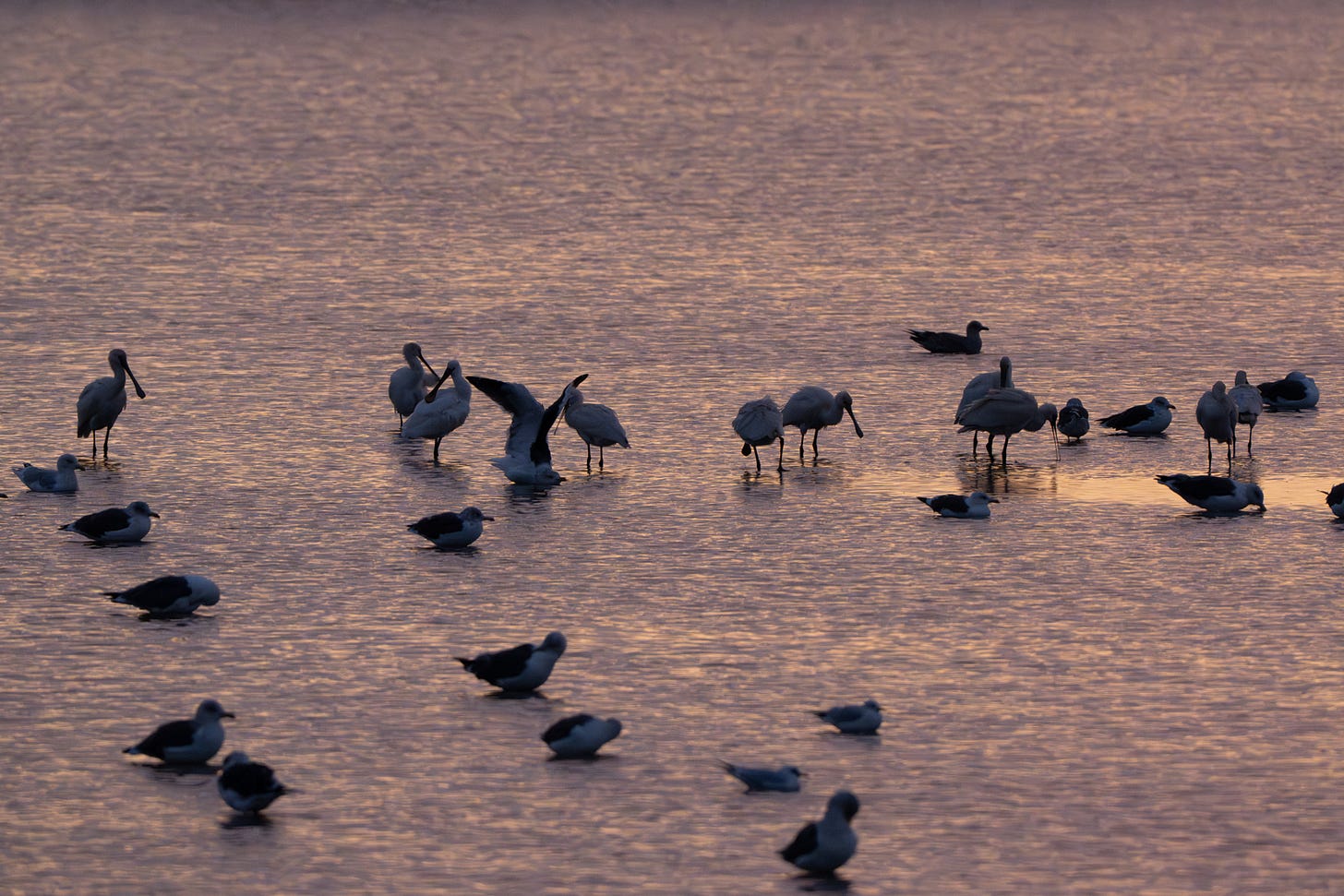
The visitor centre is nestled among some trees, and from there you can take a long gravel path across tidal marshes to the sea. Turning off from the path takes you past ponds to hides that look out over the fens, or to big hides over the scrapes.
Scrapes are shallow areas, often revealed or increased in size by the retreating tide. They are the perfect spot for wading birds to forage.
Take a look at the mixed group above. From left to right we have a napping Lapwing, a Black-Tailed Godwit and a Black-Headed Gull. Then in the main group we have a few Golden Plover – which gather in their hundreds here – and some sleeping Shoveler ducks.
But who is that little grey bird with the white neck right in the middle? Just hiding behind a duck in the image below.
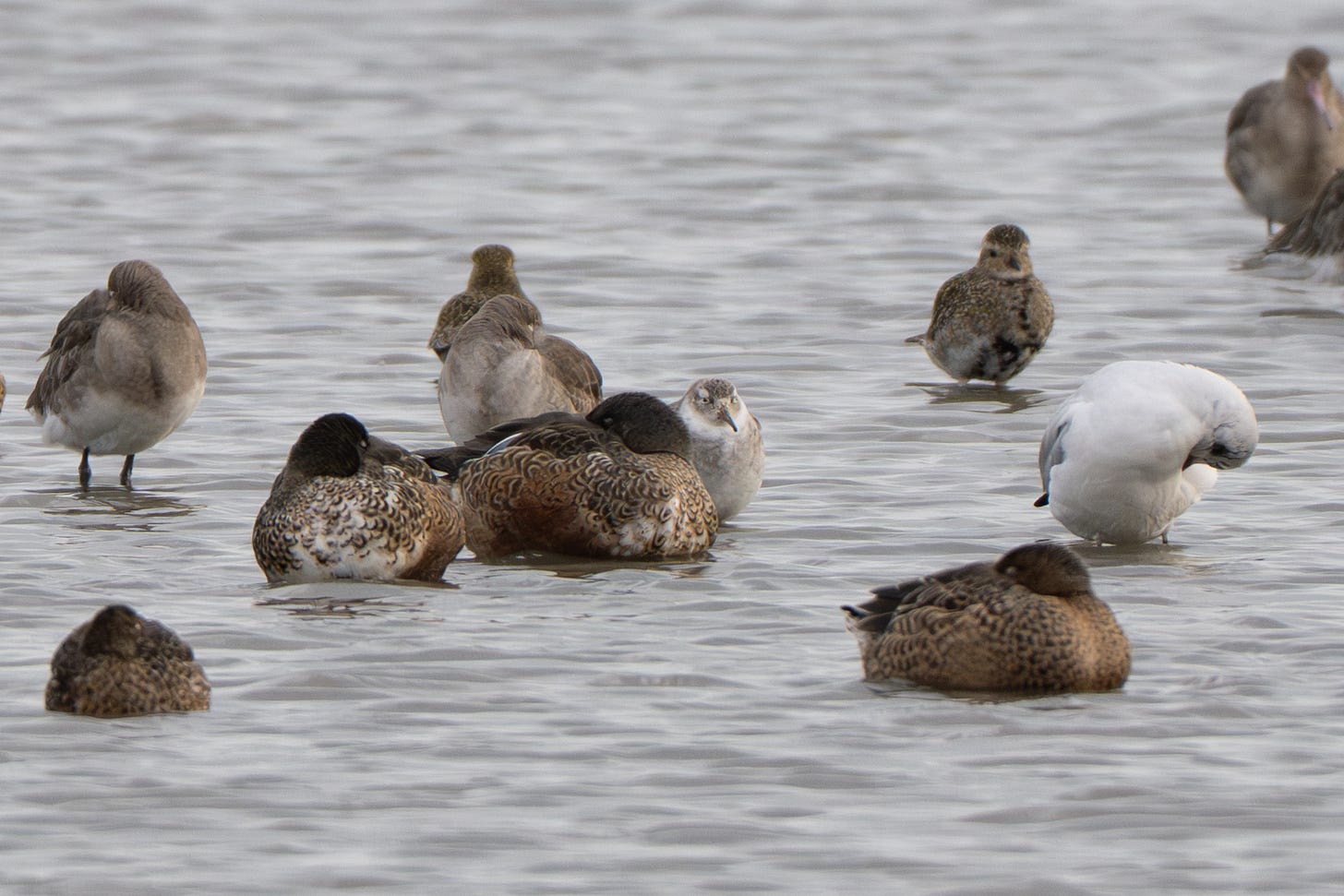
A Ruff – sadly not in its fantastic breeding plumage (seriously worth a Google!). And there are groups of birds all over the reserve with little surprises like this one hiding among them.
The scrubby marsh on the left of the main path almost disappears under the very highest tides. It is, therefore, topped up with invertebrates, molluscs and whatever else waders are looking for when they feed. But once it has dried out again, the land-loving regulars come back, too.
A female Reed Bunting is just about the most obliging year-round poser you’ll find. And the male follows suit.
Of course, there are Dunnocks and Linnets to be seen. Scrubby bushes near busy paths is a great place to photograph these birds. The backdrop looks ‘wild’, but the birds are used to people coming and going.
At this time of year, many of the birds that have relied on caterpillars and flying insects to feed their young are now eating seeds. They gather in mixed groups to do so, often taking off in a cloud of alarm calls before you even realise they are there.
The waders join in, with Redshanks making a beautiful piping call as they flee.
The beach has its own ‘regulars’ – Turnstones – who potter around in little groups. They can be seen clinging onto the rocks while foraging among the seaweed, even while being battered by wind, rain and waves.
And everyone’s favourite small waders: Sanderlings. They are tiny and have a real ‘cutesy’ expression. They run towards the sea as the waves draw back, then retreat up the beach as the water surges forward again.
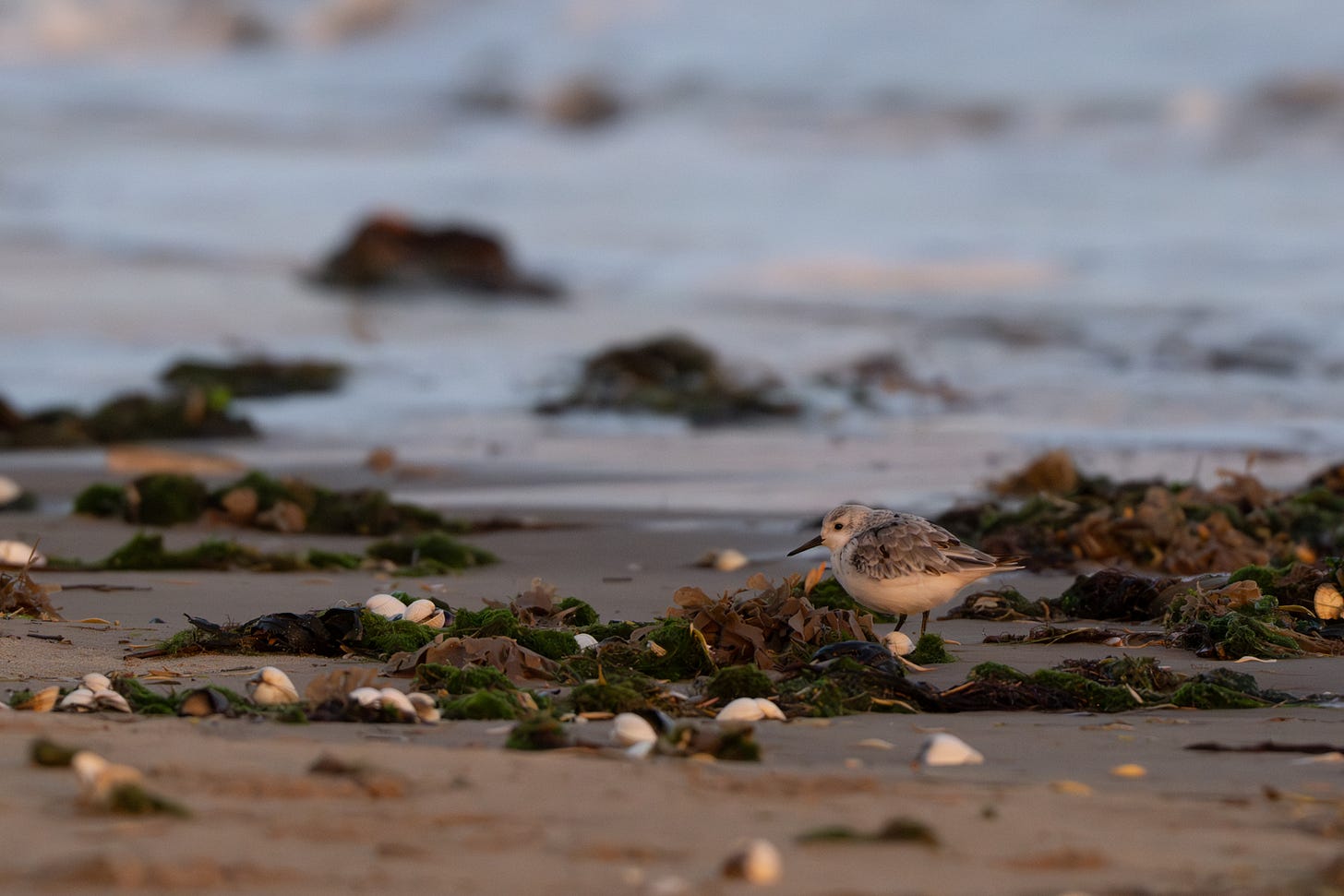
But the most enchanting sight I saw here might surprise you… it’s a goose. Or rather, thousands upon thousands of Pink-Footed Geese, arriving here from Greenland and Iceland.
If you arrive at the reserve early, you can watch the sun rise as skeins of geese in V formation fly overhead, calling. As more geese arrive, you can’t help but feel quite small and insignificant – quite a reassuring feeling, I think.
Housekeeping
I have departed from my rule not to write about anywhere that costs money to access. I believe you can see all of the wildlife mentioned here at other locations nearby that are free to access, but I don’t have the local knowledge to be sure.
I am interested to hear any feedback on this decision, especially if you have any strong/negative opinions about it! I often only have a day or two in each location, so I do tend to head to the big paid-for reserves. RSPB charge £7 to access this reserve; I will refrain from focussing on some of the pricier reserves.
That’s all for this week! Thank you so much for reading. As usual, I’d love to know what you’ve seen out and about while I was in Titchwell!
Gem


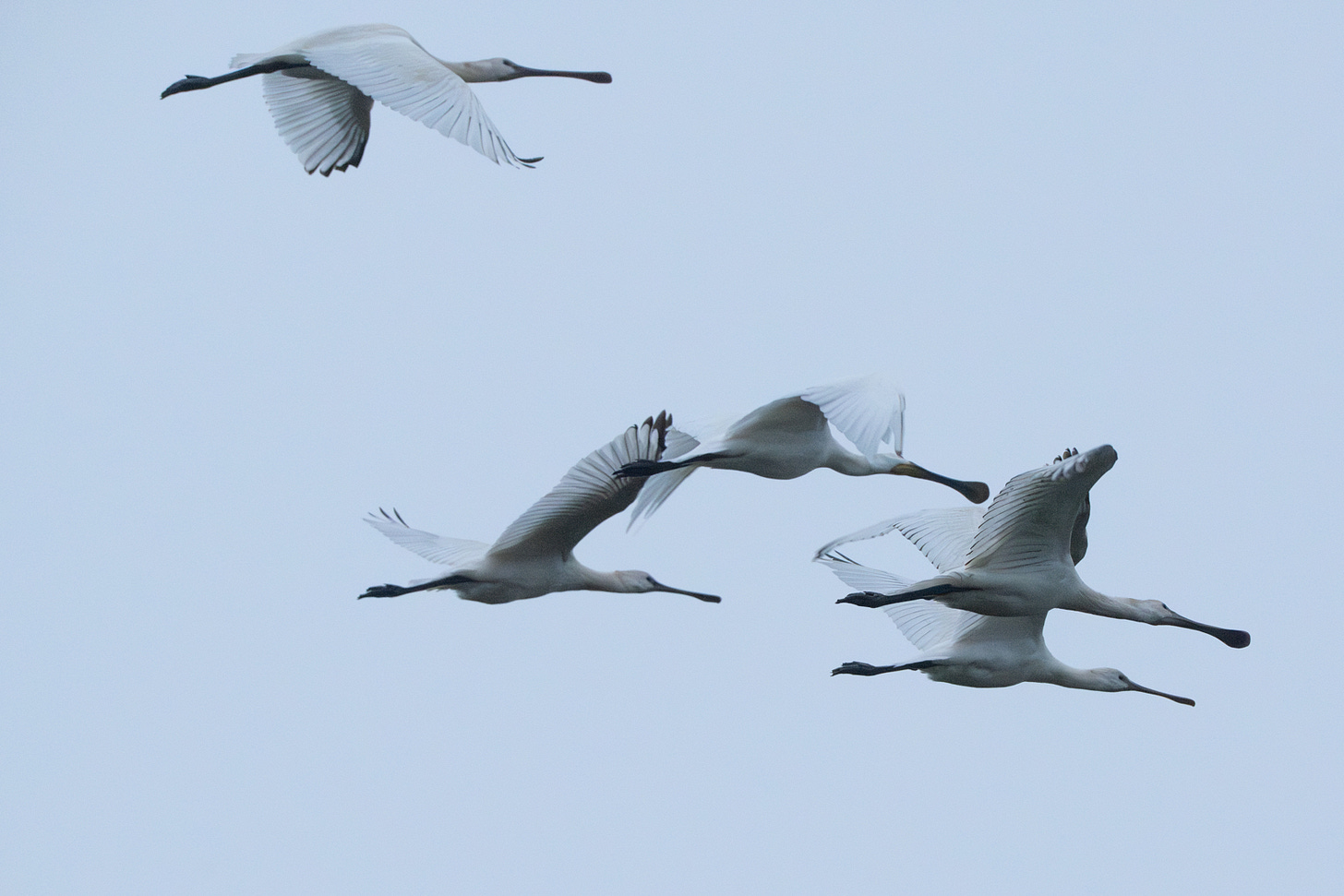
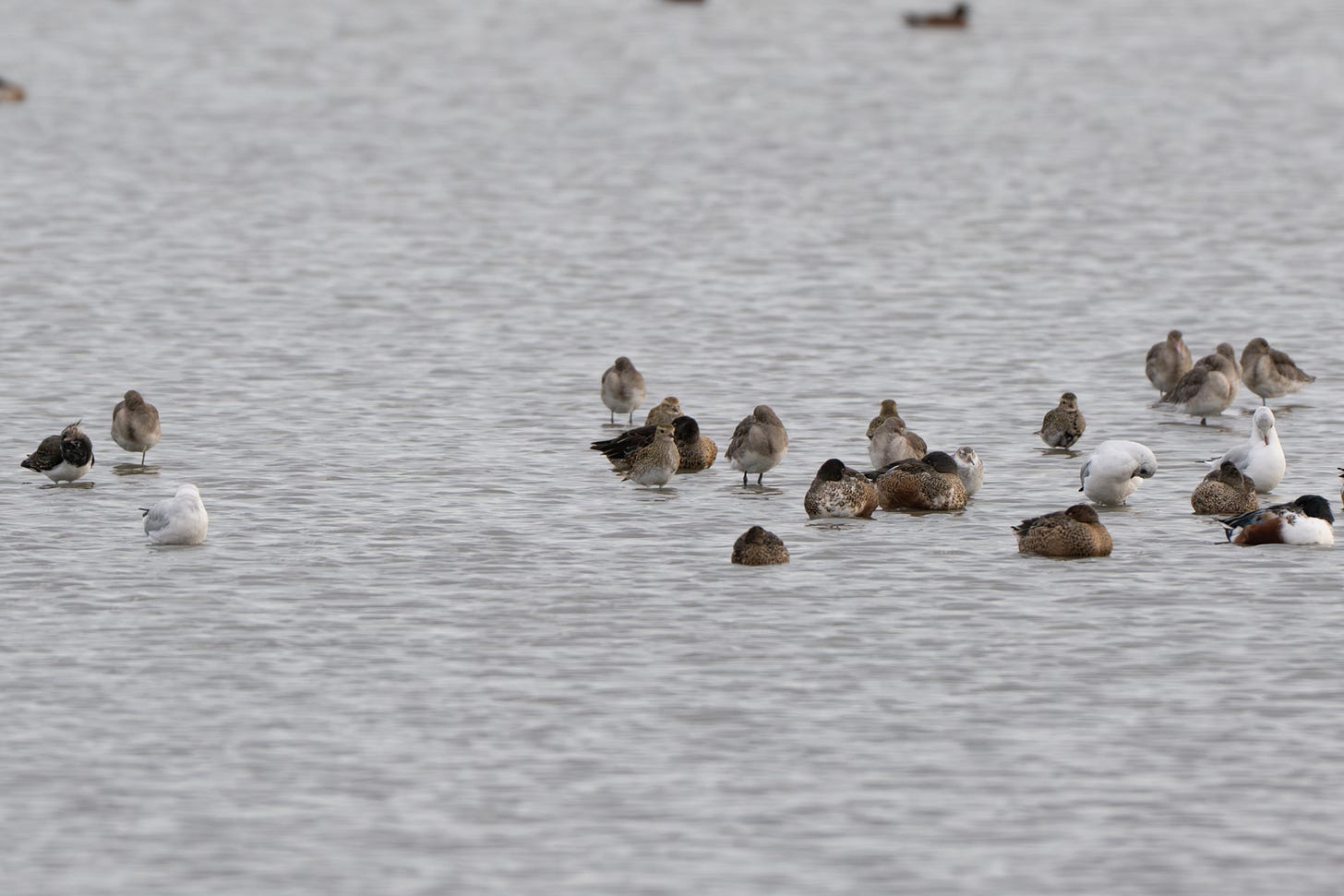
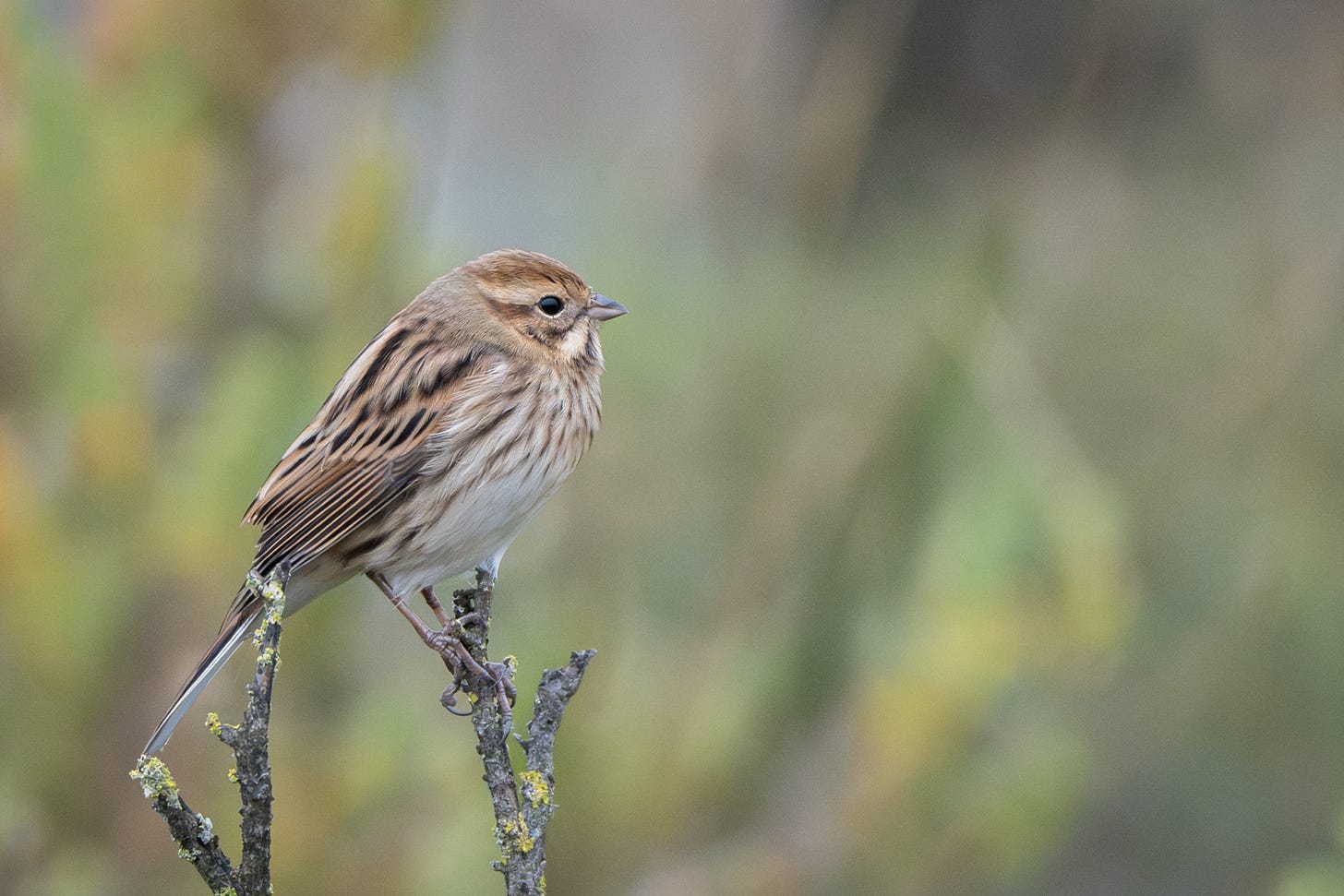
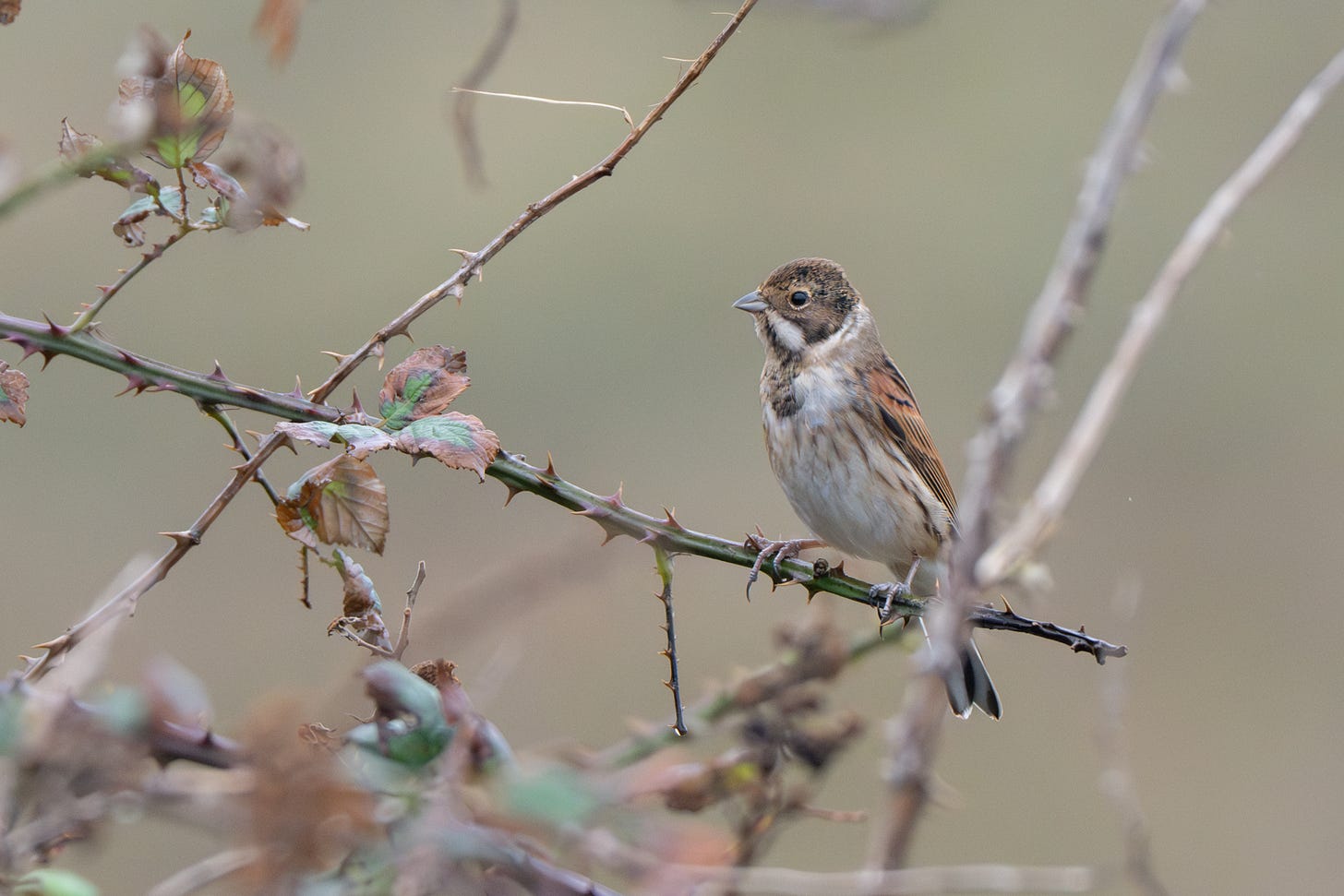
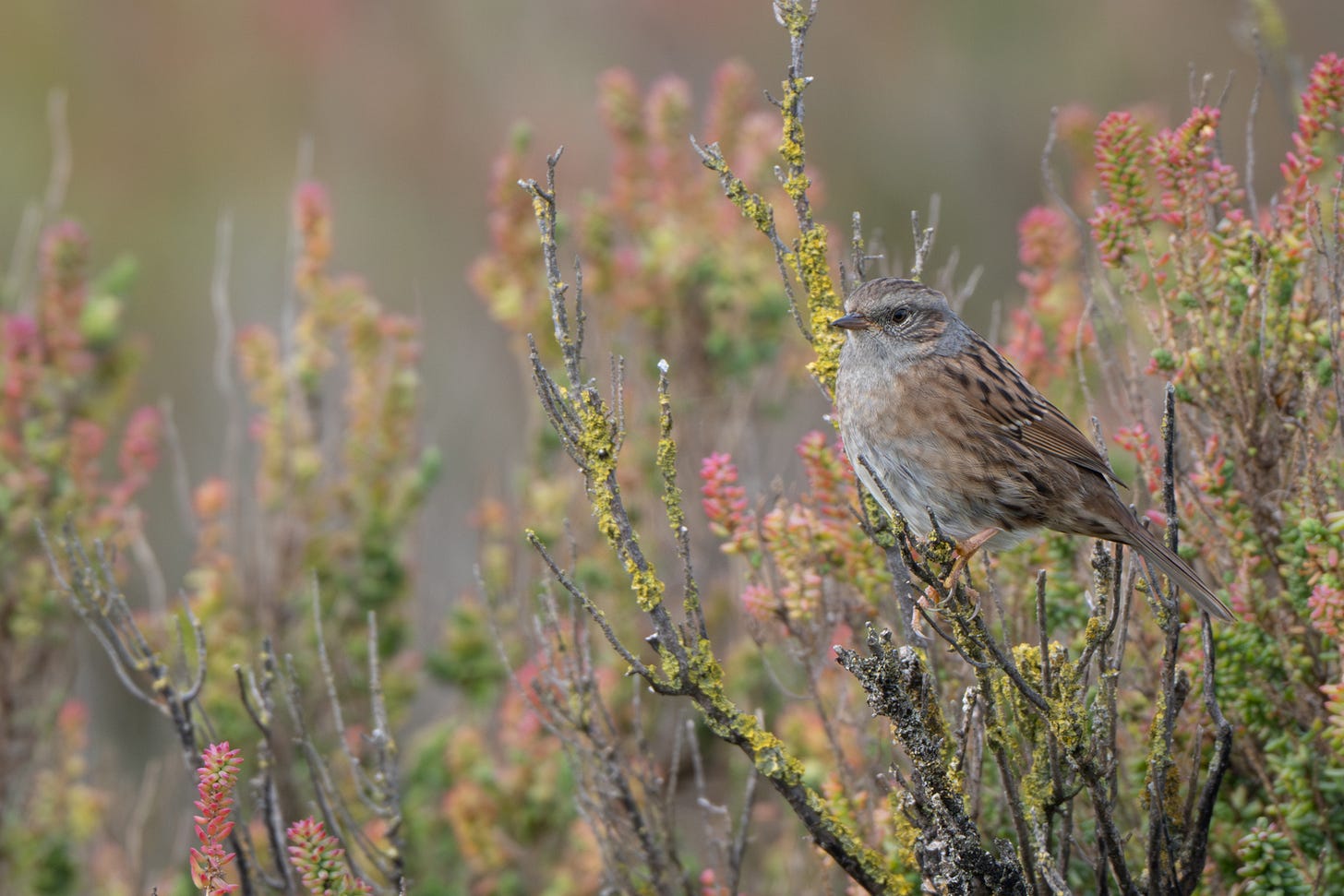
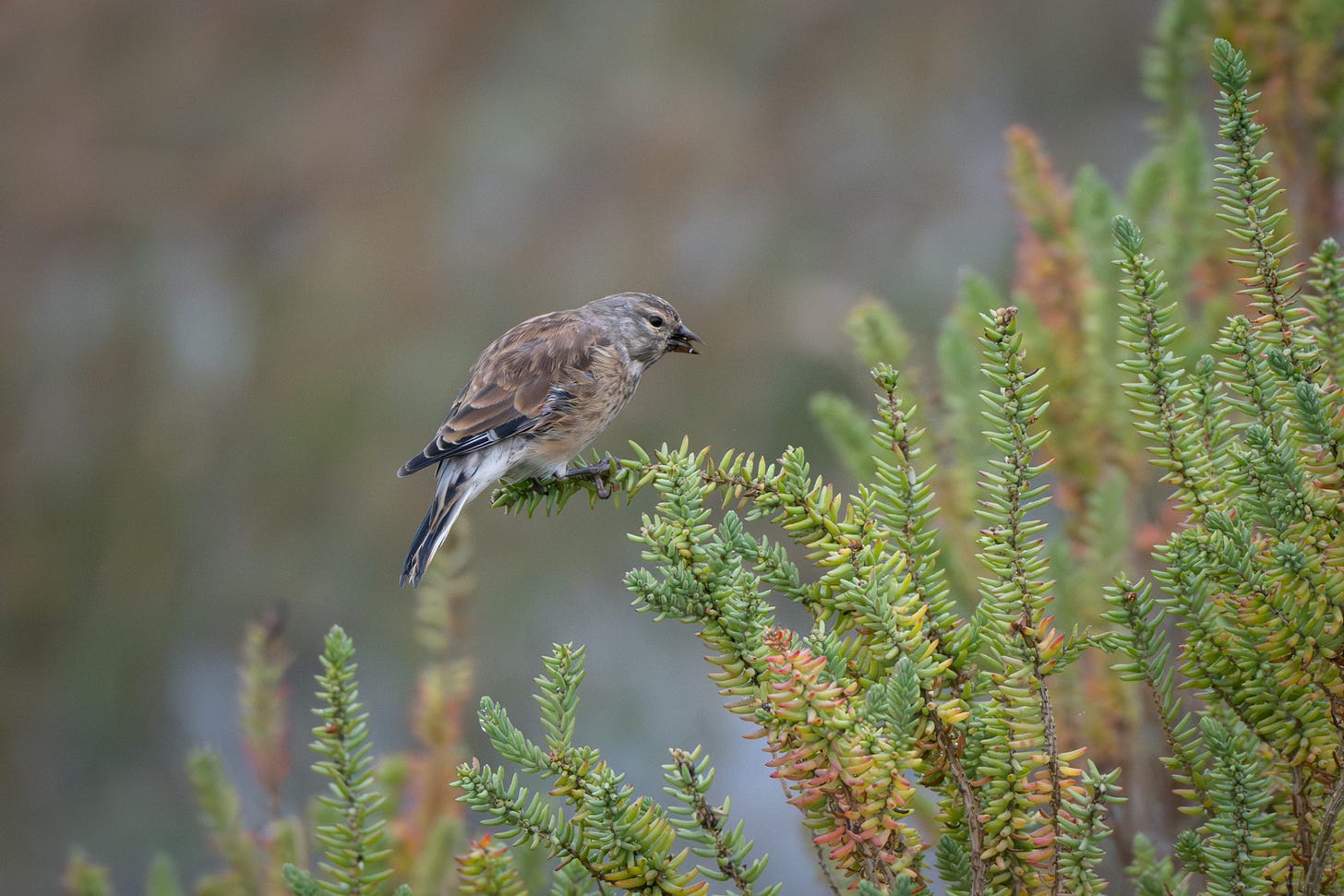
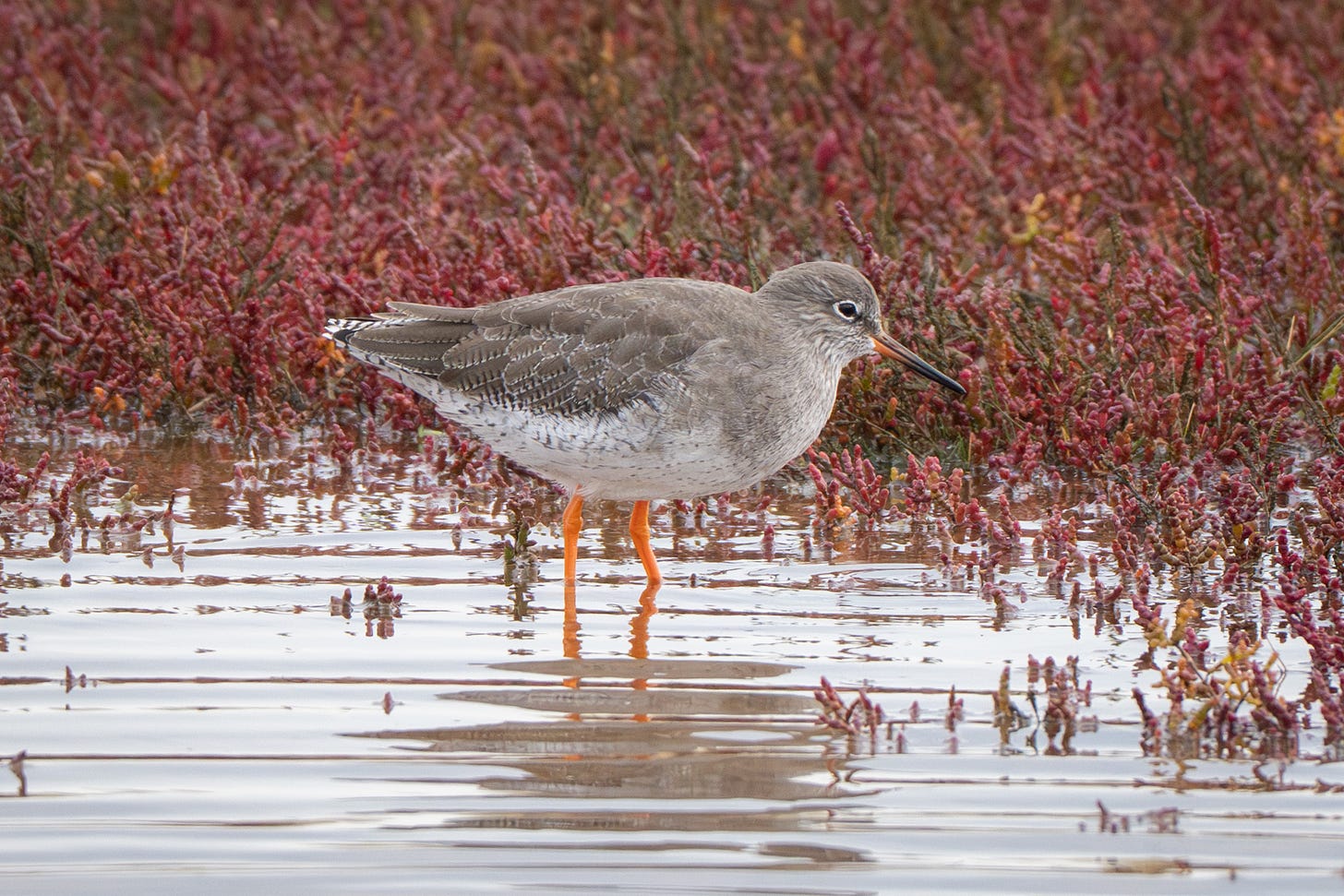
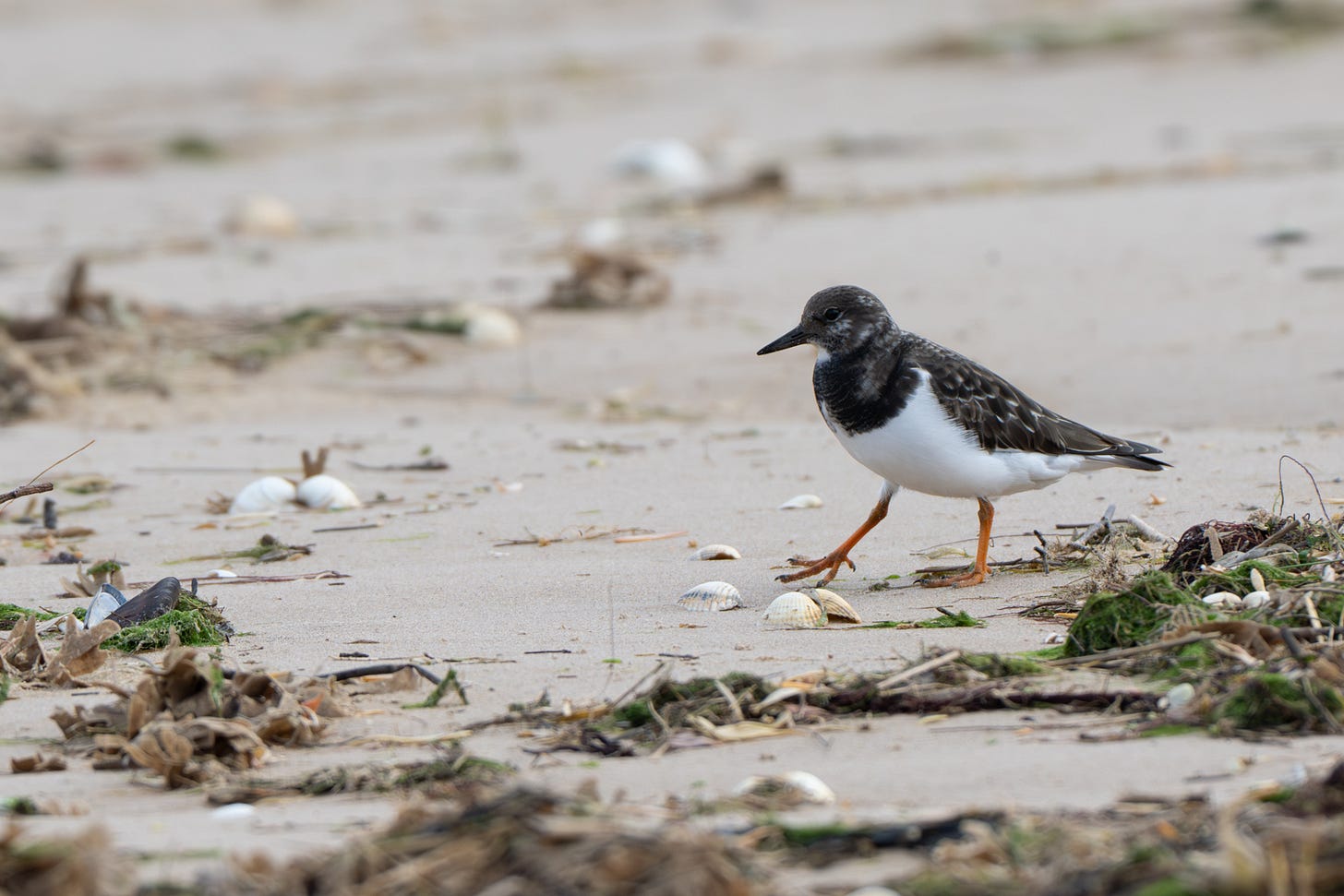
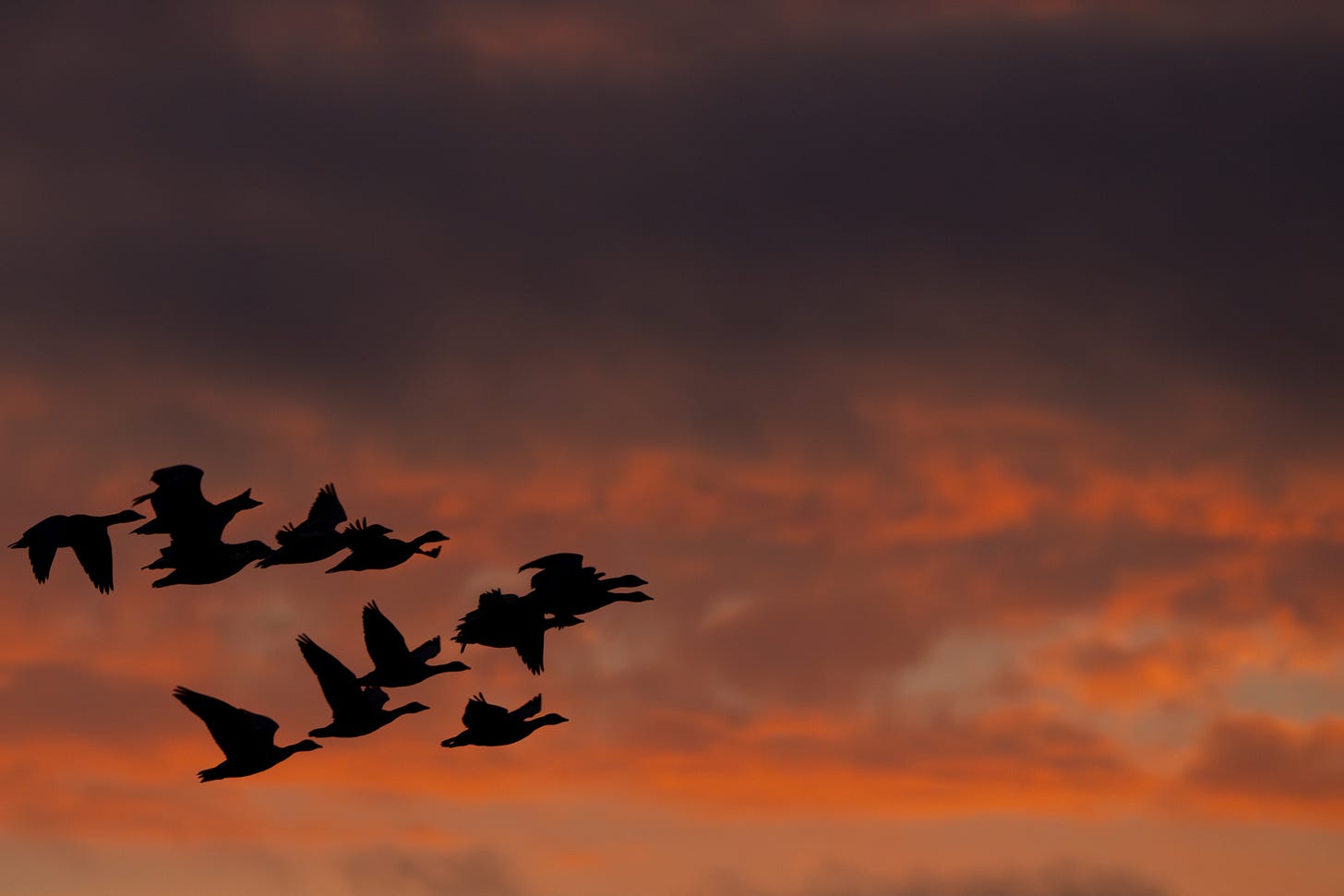
Enjoyed the read. I was there on Wednesday to see a line Spoonbill.
Free sites or nearly, nearby. Holkham Marshes just car park to pay and same for RSPB Snettisham.
North Point Pools are free near Wells.
Salthouse Marshes are free and you can walk west along coast to Cley Marshes free but only along coast looking over marshes.
There are a few other sites
Wonderful, as always; and some fantastic images!
I am a member of the RSPB, as I think the work they do is extremely important: so I think you are allowed your entry fee in the same spirit. Thanks to @Burhinus, though, for the list of cheaper/free locations listed. I appreciate that not everyone can afford regular entry fees or memberships.